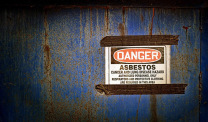Report Finds Asbestos, Other Risks in Military Family Housing
Asbestos Exposure & BansWritten by Tim Povtak | Edited By Walter Pacheco

U.S. military families around the world are living in government-owned and -operated housing containing serious health and safety risks, according to the most recent report by the Department of Defense Office of Inspector General.
The report stems from the inspection of eight military installations — seven outside the U.S. — that uncovered systemic deficiencies in the management and mitigation of asbestos-containing materials, lead-based paints and radon in family housing units.
According to the report, the safety hazards were so rampant — and so lacking in oversight — in all eight installations that other government-run military bases likely have the same issues.
“If the DoD [Department of Defense] and the Services do not improve policies and procedures to identify, mitigate or minimize, monitor, disclose, and oversee health and safety hazards in GO‑GC [government-owned and government-controlled] military family housing, the DoD and the Services will continue to risk the health and safety of Service members and their families,” the report stated.
Defense Department Report Finds Problems Around the World
The military installations involved in the report are:
- U.S. Army Garrison Humphreys, Republic of Korea
- U.S. Army Garrison Wiesbaden, Germany
- Naval Station Guantanamo Bay, Cuba
- Commander Fleet Activities, Yokosuka, Japan
- Marine Corps Air Station Iwakuni, Japan
- Kadena Air Base, Japan
- Spangdahlem Air Base, Germany
- Wright-Patterson Air Force Base, Dayton, Ohio
The Air Force, Navy, Army and Marine Corps own and operate more than 36,000 housing units combined outside the United States.
Military Housing Evaluation Cites Asbestos Concerns
Asbestos exposure was a major part of the recent evaluation. Asbestos is a naturally occurring mineral that once was used ubiquitously by all branches of the military to strengthen and fireproof most anything with which it was mixed.
It was used in the construction of trucks, ships, aircraft, tanks, barracks and other buildings.
Asbestos also was used extensively throughout the world in both residential and commercial construction for much of the 20th century. While its versatility was once considered a virtue, asbestos fibers can be toxic when inhaled or ingested, causing serious health issues, including lung cancer and mesothelioma.
Military veterans account for a disproportionate amount — almost a third — of those diagnosed in the United States with mesothelioma, a rare and aggressive cancer.
According to the report, five of the eight installations did not maintain accurate records of the location and condition of asbestos-containing materials, preventing an accurate determination of the hazard extent.
Six of the eight did not notify residents of asbestos-containing materials within the housing units in which they lived, making them unaware of the safety concerns.
The report also uncovered problems such as flaking lead-based paint, inadequate management of radon seeping into homes through the foundations and a failure to monitor drinking water supplies.
Just three of the eight installations had asbestos mitigation programs. Only one had an active radon mitigation program.
“This report is not a surprise for any service member who has lived in some of the older, on-post housing, either in the U.S. or overseas,” said Aaron Munz, former U.S. Army captain and director of the Veterans Department at The Mesothelioma Center at Asbestos.com. “Unfortunately, the military continues to expose service members to potentially dangerous conditions by not allocating the required resources to ensure that our personnel and their families are provided with safe housing.”
Military Housing Report Stems from Congressional Directive
The Department of Defense Office of Inspector General released the report publicly on May 4. It stemmed from the original Congressional directive in 2018 that was designed to examine contamination of government-owned military housing within the U.S.
That directive was revised to include expansive privatized housing, which in 2019 revealed serious safety and environmental issues inside the aging structures where service members and families were living.
Among the issues were dangerous levels of mold, lead-based paint hazards and exposed asbestos products.
The scope of the investigation further expanded to include U.S. military housing at installations around the world, leading to the most recent report.
The inspections included management of the installations and record keeping for housing units. Nine categories of potential safety issues were examined.
It was determined that electrical systems, fire hazards, carbon monoxide and mold issues were viewed as mostly adequate.
Widespread issues were found with asbestos, lead and radon, among others. Recommendations to correct the problems were made.
“We recommend that the Services develop oversight policies and procedures to assess the management of health and safety hazards in GO‑GC military family housing,” the report concluded.
It also recommended that military service branches “direct installation officials to correct specific lead-based paint, asbestos-containing material, radon, fire safety and drinking water quality health and safety hazard management deficiencies discussed in this report.”






